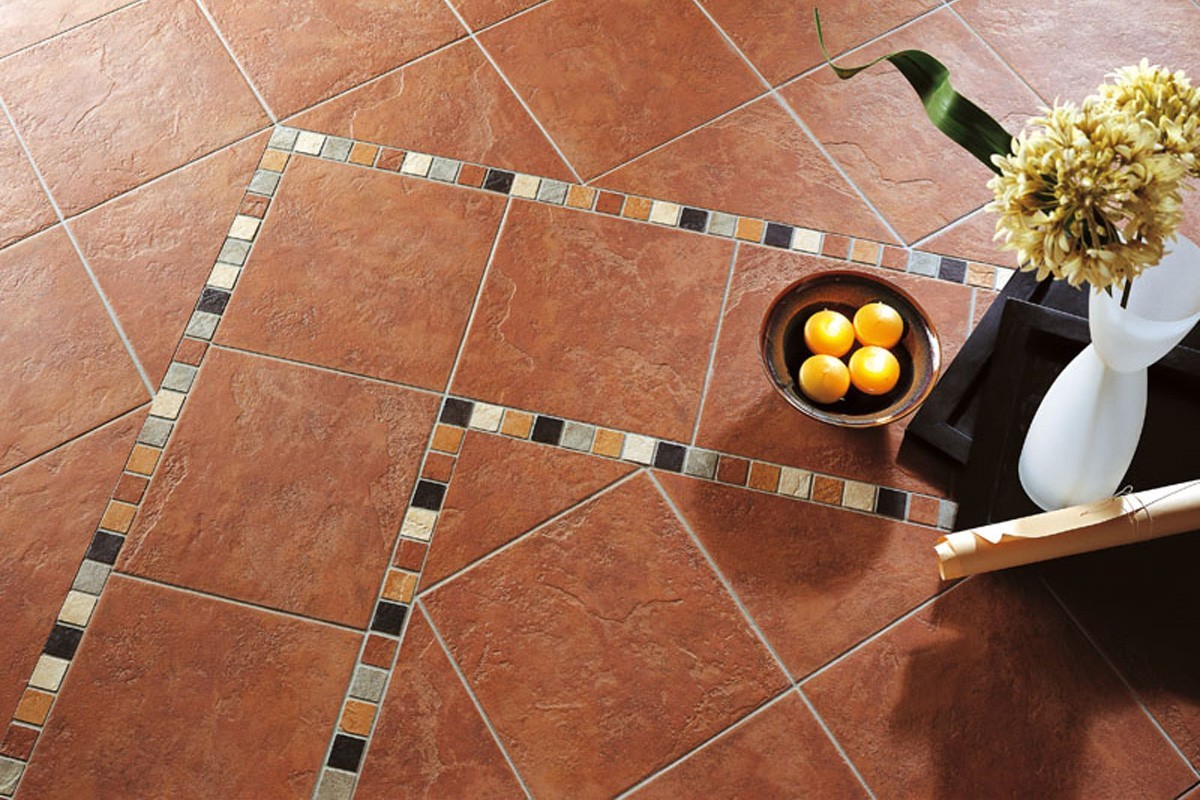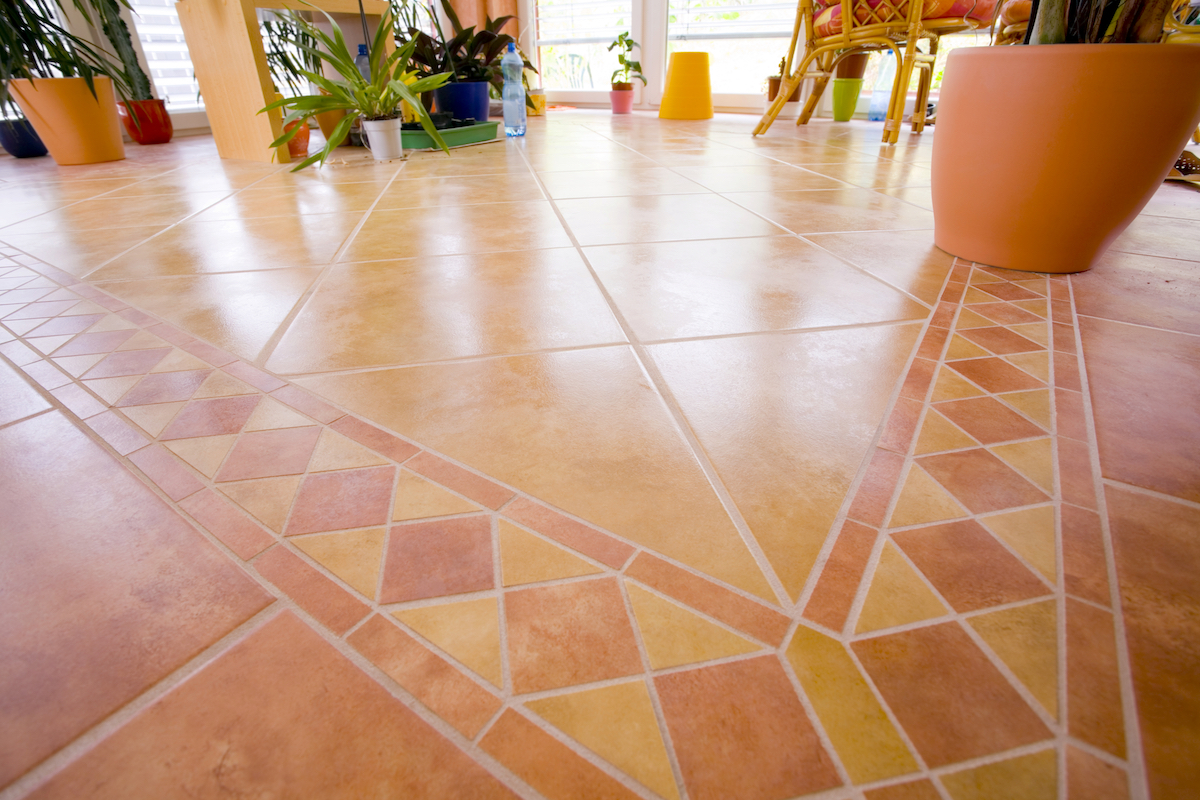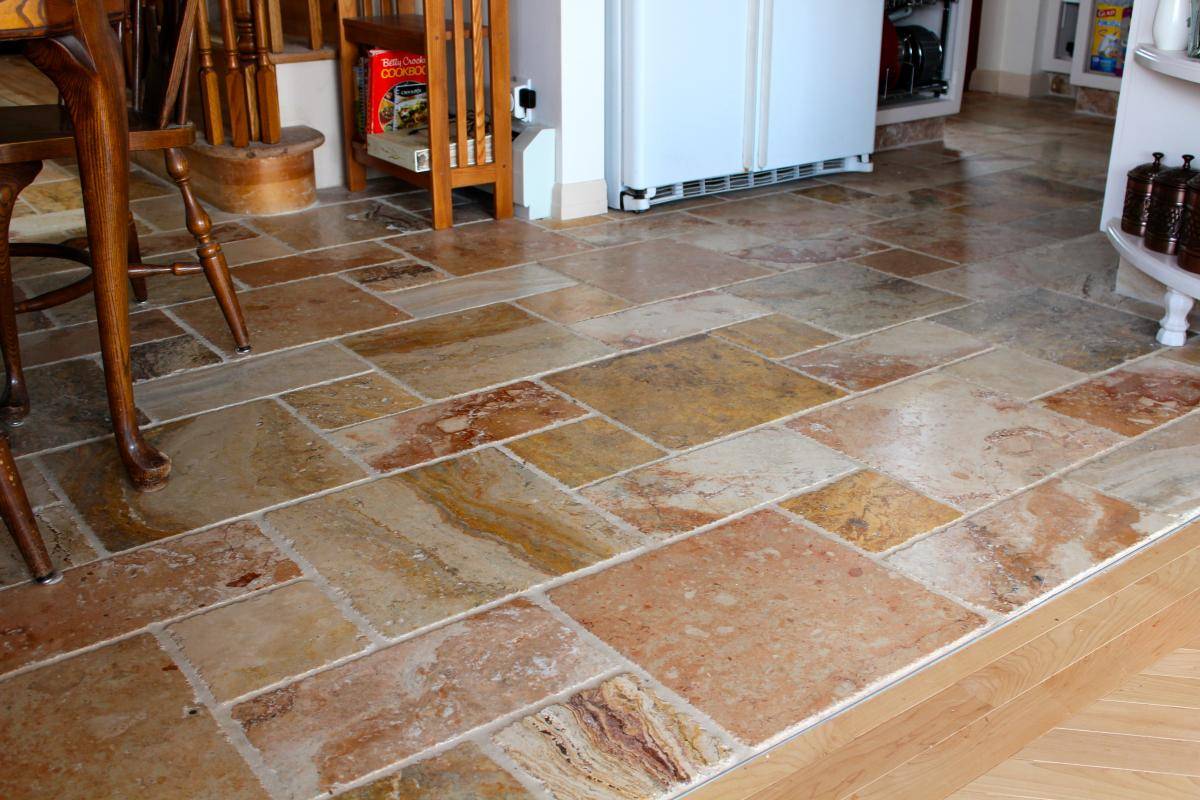In this topic, we want to talk about the history and types of terracotta tiles. These tiles are available in various usages like floor tiles and different sizes like 300×300. Terracotta is one of the subcategories that fall under the larger category of clay ceramic tiles.
These tiles have been around for a very long time. Terracotta is an Italian word that translates to “baked earth.” When referring to a ceramic tile category, terracotta refers to tiles made from types of clay that is particularly porous and easily shaped.
This clay also has a high iron content, which is what gives the tiles their distinctive reddish-brown color.
Terracotta is burnt at a temperature lower than most ceramics (about 1,000 degrees Fahrenheit), and until it is glazed, the terracotta surface remains quite porous. Terracotta tile is one of many forms of ceramic that may be purchased easily and at a lower cost than other types. Its success can be attributed, in large part, to its appealing natural colors, which are the quintessential examples of earth tones.
When looking into terracotta floor tiles, you will find that there are a variety of options available to choose from.

Tiles with a Low Density and Tiles with a High Density
Depending on the circumstances, terracotta tiles may be classified as either high-density or low-density materials; nevertheless, the “high density” moniker is the one that manufacturers most frequently promote. Terracotta with a high density will not crack as easily and is a superior option for high-traffic locations due to its durability.
Terracotta with a low density is typically a less expensive material, but it may not hold up as well when subjected to hard use. Because of its higher porosity, low-density terracotta is not recommended for use in damp environments or in environments that are prone to stainings, such as kitchens and baths.
Changes in Tone and Color
Terracotta tile is a naturally occurring material, and the color of the tile will vary depending on the region from whence the clay was produced.
Terracotta tiles typically range in color from yellow to a very dark brown, with a wide variety of reddish tones in between the two extremes. Terracotta created from the clay found in Saltillo, which is located in the state of Coahuila in Mexico, is a particularly popular type.
The distinctive and easily recognizable coloration of saltillo tiles is achieved by combining yellow and reddish undertones.

Tiles that are natural, burnished, or sealed
Terracotta tiles are beautiful when they are in their natural condition because they have a mixture of earthy tones and reddish undertones. When fired, the tiles take on images that are one of a kind yet muted as a result of the terracotta’s firing process. However, it is precise because of this quality that terracotta is extremely porous in its original, unglazed state.
This indicates that water and other liquids can easily seep down into its core, which might lead to the development of mold or stains. Because of this, natural terracotta is typically treated with a sealant regularly so that it can be protected from the aforementioned dangers.
Natural terracotta can also have its absorbency reduced by a procedure known as surface burnishing. The production process includes burnishing, which consists of rubbing or polishing the surface with fine abrasive to achieve a denser, smoother finish. This step is performed by hand.
Glazed vs. Unglazed
Terracotta, like other types of ceramic tile, can be glazed, which is a procedure in which a surface finish similar to glass is bonded to the clay tile during a second firing process. Terracotta pots can be glazed. Standard ceramic tiles get their color from dyes mixed in with the substance used to make the glaze.
Tiles that have been through this process have a surface that is not only waterproof but also resistant to the penetration of stains. When glazing is put to terracotta, however, the natural beauty of the earthy tones of the tile is concealed, which is a pity. When deciding between glazed and unglazed terracotta tiles, it is up to the consumer to analyze the pros and cons of each option.
Terracotta tiles that have been hand-glazed or hand-painted are another option for striking a balance between form and function. These tiles can be purchased. Terracotta that has been hand-glazed or hand-painted not only allows some of the inherent beauty of the tile to show through but also improves the tile’s resilience to stains and water.

Terracotta Tiles Made by Machine vs. Those Made by Hand
When shopping for terracotta floor tiles, you can purchase either machine-cut or handcrafted products.
Tiles that have been machine-cut are the result of a factor-based process involving the firing, cutting, and offloading of terracotta tiles into exact, computer-guided geometric designs.
The natural beauty of the iron-laced clay colors is still there in these tiles; however, they are more constant in shape and dimension, which makes it much simpler to put them in place. In addition, the finished installation will have a more uniform appearance as a result of this.
Mexico and a sizable area of southern Europe are only two of the places in the globe where terracotta pottery is traditionally made by hand. This procedure is an imprecise method that generates pieces with tiny flaws that improve the earthly appeal of the material.
The pieces are produced by a method that produces pieces that have slight irregularities.
The disadvantage of handcrafted terracotta tile flooring is that it can be rather expensive. This is because the handcrafting process takes significantly more time than the production process by machine.
The outcomes are also known to be somewhat unpredictable, and the fact that individual tiles might vary in size can make installation challenging in some cases.

Different Applications for Terracotta Floor Tile
When used as a flooring material, terracotta lends an air of antiquity and quaintness to the space. The atmosphere is rough while also being somewhat somber.
It is also a suitable material to use when certain regional home styles are sought; for example, terracotta is an excellent choice for the décor of homes in the Southwest, Mexico, or the Mediterranean.
Any natural or rustic scene, as well as those decorated in a log cabin style, would benefit greatly from the use of this material. It is frequently utilized in living rooms as well as enclosed porches.
Terracotta is the ideal material for a hearth-and-home or earth-toned décor since it is cozier than stone or pottery that has been glazed. There are a few outdoor uses that are suitable for terracotta tiles, but they can only be utilized in locations that do not experience consistent cold temperatures. In locations with a colder climate, water that the terracotta has absorbed may freeze and cause the tiles to shatter.











Your comment submitted.